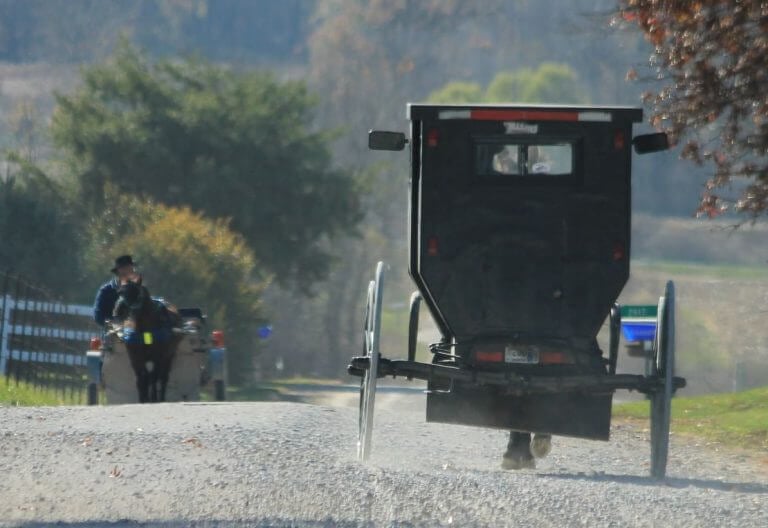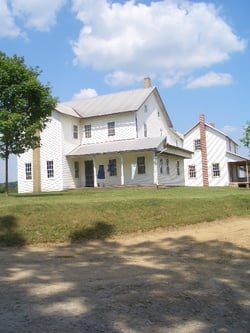Amish population statistics
Just got a hot tip from the Young Center that the 2009 Amish population statistics are up at the Amish Studies web site.
A couple quick things I noticed between this year’s and last year’s numbers: on the lower end, Arkansas has jumped from 1 to 3 settlements, and the Maine Amish, Montana Amish, and Kansas Amish have all added a settlement.
Ohio, Pennsylvania, and Indiana retain the #1, 2, and 3 spots as the states with highest Amish populations. In a surprise move Missouri has passed New York, moving from the #7 to #6 position. This looks due to the fact that Missouri added 3 new settlements since the last figures were compiled.
Overall the total number of Amish settlements has risen to 423, and a whopping 1,727 church districts.





I know we have seen more amish here in my little town. You always see quite a few in the neighboring town but it was rare here. I have yet to see a buggy here in town though as they always have people drive them in in cars and such. I think they live out a ways from us on some dangerous roads to drive a buggy on.
Hmmmm….
Amish population up. Number of church districts up.
Meanwhile, my Roman Catholic church…..shrinking, shrinking, shrinking.
Stephen B.
suburban Boston
Who cares
No one cares about roman catholics Stephen B. you’re catholic it’s not like people are thinking “oh those amish have billions of dollars, their own country and are molesting children without the country that they supposedly belong to on a religious level exacting the wrath of got on them”. are catholics thinking that the Amish are going to take them over, no They’re just thinking “if they’re supposed to be dutch why do they have a german accent? (I know Dutch is accually a missinterpretation for Deutsche as of German)
How come the population grew by 6% 2007-2008 but just a little above 1% 2008-2009? I know maybe the counting of districts may be the best way to estimate their number but, i guess, it can be flawed. Check the amish studies page.
Right, good questions, the numbers are by necessity estimates based on church districts, using a fairly conservative estimate of 135 people per district…of course Amish districts do not have a fixed schedule as to when they divide, typically it would be when they are around 40 or so families but there are instances where church districts reach 50 or nearly 60. So if you happen to have a lot of divisions one year but only a few the next, you may have these uneven numbers. Though I don’t know if there are other factors involved, the necessity of going by estimates means it will be imperfect but averaging out over the years it should show a growth rate in the 3% to 4% range, and so taking the above into account it is not too unusual that there is a year to year fluctuation in this data. That’s the unofficial take from me, thought I will double-check with YC.
Raber’s has most districts but as I understand it there are some that are not included–I do not know the percentage but it is small. I also do not know the exact protocol as to when/how districts report but I believe it is largely self-reported–Raber’s requests info on changes and they have a June 1 deadline. YC uses not only Raber’s but other sources including directories, informants, etc.
I had the same question as Troy. I’m sure the guys at Young are very thorough in their work, but the sources they are using must have limitations for there to be such significant fluctuations in the Amish growth rate year-on-year. Any idea as to the percentage of Amish settlements and church districts that report their existence to Raber’s Almanac, how long it takes a new church district to get around to reporting, etc…?
What seems odd to me is that there are states that one would expect to be high growth states that lost church districts from 2008 to 2009, such as Pennsylvania (-1), New York (-4), Kentucky (-5), and Illinois (-3). Where did these church districts go? I was thinking if a district dissolved because of migration, whatever district or districts its former members were to found might take a while to show up in Raber’s because it is self-reported and people who are moving have other more immediate concerns.
On that note, I remember reading in an online newspaper a few years ago about a new old order amish settlement in Manitoba that has yet to show up in Raber’s.
Stephen B,
If you are interested in similar research highlighting Catholic census trends over the past 50 or so years, you might want to take a look at the book “Index of Leading Catholic Indicators”, by Kenneth Jones.
But no matter how it might appear, its highly doubtful that former Catholics are making the jump to the Amish ;-). Though there have been a few…
Matthew
Are the communities in Springdale, Washington and Bonners Ferry, Idaho gone now? I was surprised to not see them listed in either year.
Mark, good question. I don’t have an immediate answer for that but will respond if/when I do. Richard, Springdale and Bonner’s Ferry both ceased to exist in 2004, according to Luthy’s settlement guide.
I am enjoying your blog. Thanks for the update on the population. I was actually just wandering what the current stats were.
http://www.pa-dutch-travel.com
I found an interesting piece from a Somerset County PA newspaper and thought it somewhat relevant to this topic;
http://www.dailyamerican.com/articles/2009/07/25/news/local/news105.txt